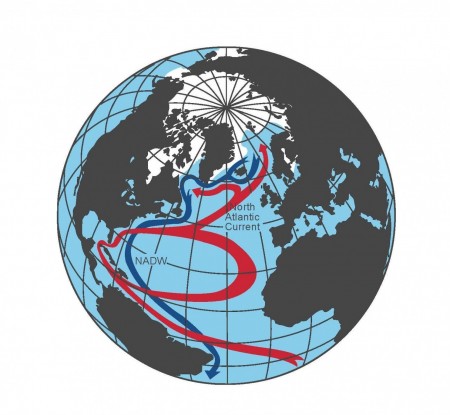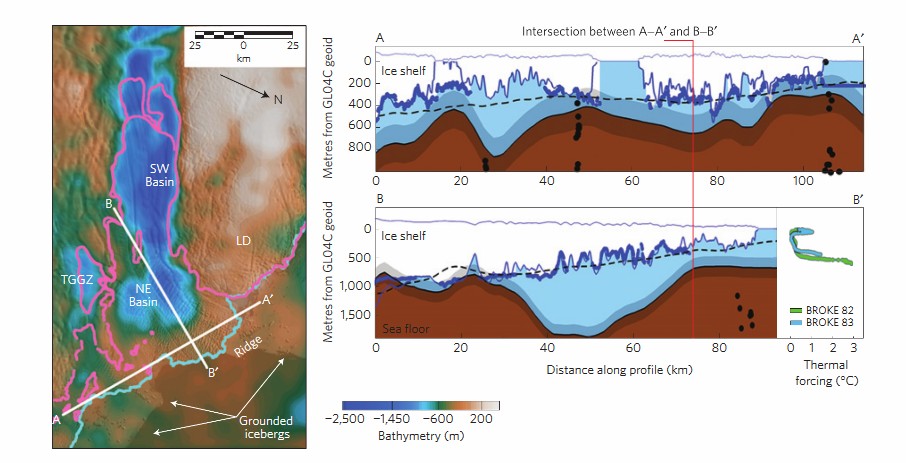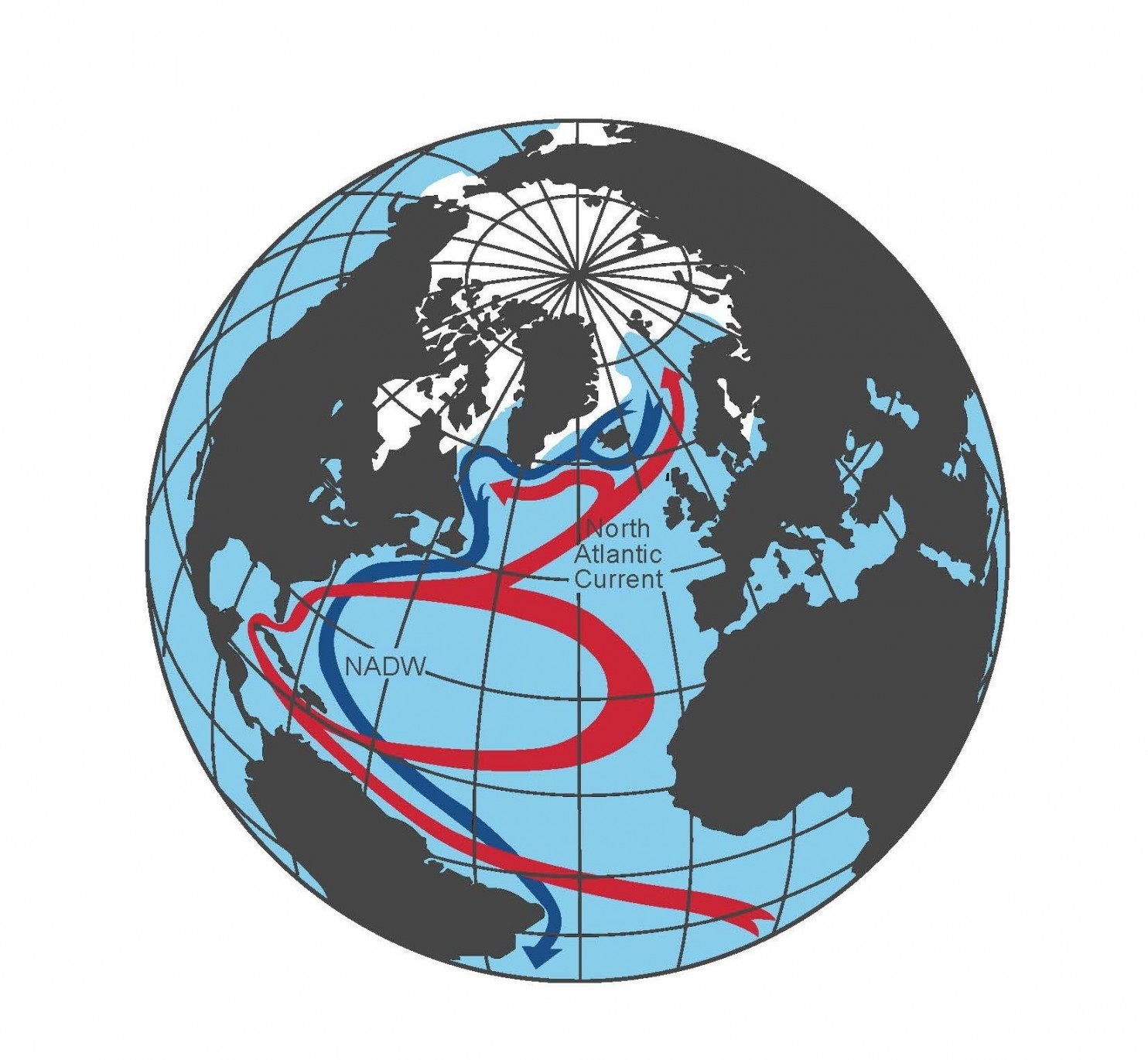March 25, 2015 – In the last two weeks climatologists and oceanographers reported the outcome of two studies, one focused on glaciers in the Antarctic, the other on ocean circulation patterns and trends. In both cases the news was disturbing.
Antarctic Glaciers Destabilizing
As much as the Antarctic Ocean’s winter ice pack has grown in area, it has also exhibited thinning. For climate change skeptics the spread of ice comforts them in the notion that global warming is a hoax. But the reality of Antarctic ice is far more disturbing.
It appears that two large ice sheets, the West Antarctic and the East Antarctic’s Totten Glacier, both grounded below sea level at the continental margin, are both destabilizing. What causes this? Warm seawater discovered in increasing amounts under the ice. The intrusion of the ocean water is creating troughs and cavities 400 to 500 meters below the ice surface. The result, these massive blocks of ice are thinning rapidly. The illustrations below show the shape of the ice shelf and the sea bottom beneath. Note the troughs and canyons that have opened up under the shelf.
The above illustration is featured in a new paper, written by scientists from University of Texas at Austin, University of Tasmania, University of Western Australia, Grantham Institute, Imperial College London, CRNS- LEGOS, Toulouse, France, and the Jet Propulsion Laboratory of Caltech in Pasadena. The scientists have been gathering data for almost two decades and their conclusions are we may be witnessing the start of increasing destabilization.
How big is Totten Glacier? The floating ice shelf alone covers an area over 5,100 square kilometers (approximately 1,980 square miles). The glacier behind the shelf is much larger (see map showing Totten’s location and size below). Currently Totten is locked in place by its ice shelf. As the latter continues to melt at current rates, about a half cubic kilometer (.12 cubic miles) of ice per year, equal to the volume of water in the harbour of Sydney, Australia, it will reach a point where the glacier would no longer be held back leading to rapid disintegration and outflow into the Southern Ocean.
This is the same phenomenon that scientists have been observing with Greenland’s glaciers.
That’s just the Totten. The West Antarctic ice sheet, even larger, is also being held back by coastal ice shelves that are experiencing similar erosion and are in just as much danger of disintegration. It is this double whammy that could lead to rapid rise in global sea levels within this century.
The scientists estimate Totten would contribute a sea level rise of as much as 3.35 meters (11 feet) while West Antarctica would add another 3 meters (10 feet). And because of gravity and the shape of the continents that total rise would not be evenly distributed across the world’s oceans. Scientists predict the rise will be most noticeable in the northern hemisphere where much of our human population lives, many in cities along or close to sea coasts.
Scientists who have been studying the history of glaciation note that a similar sudden rise in sea level occurred in the Pliocene, 5 million years ago, when the oceans rose by as much as 40 meters (over 130 feet).
Ocean Circulation Slowing Down
The global conveyor belt which includes the Gulf Stream, the warm water current that feeds the North Atlantic Current keeping Europe warmer in the winter than many areas much further south in North America, appears to be slowing down, according to a new paper written by scientists from the Potsdam Institute, the Geologic Survey of Denmark and Greenland, Pennsylvania State University, University of Madrid and Roger Williams University in Rhode Island.
The evidence shows a general cooling in the North Atlantic Ocean in defiance of overall global warming. The potential cause, too much ice melt from Greenland changing the density of the cold water that normally sinks and moves southward as a counter current to the Gulf Stream.Without the water moving south it effectively blocks the warmer water from heading north.
It is precisely this phenomenon that was featured in the plot line for the movie “The Day After Tomorrow.” That story led to a new Ice Age but scientists studying the phenomenon see that as highly unlikely.
The circulation decline has been calculated at 15 to 20%. Such a change has not been seen since the year 900 CE. When the Intergovernmental Panel on Climate Change published their 2013 report they predicted a weakening in circulation with a best estimate of between 11 and 34% by the end of the century. What the data shows is we are already within that range in 2015.
“The Day After Tomorrow” scenario will not happen, rest assured. Europe and North America will not go into a deep freeze but the former will certainly cool in relation to the rest of the planet. North Atlantic fisheries will be impacted as water temperatures and salinity continue to be disturbed. And a weakening of the Gulf Stream flow will contribute to sea level changes off the North American coast. That’s because with the weakened Gulf Stream current it will be subject to geostrophic flow balance with water to the west rising while water on the east side drops. The climate modelers are still working on how weather patterns will be impacted.
























[…] New studies show increased Antarctic ice melt from a warming Southern Ocean; while ocean circulation slows in response to Greenland melt. […]